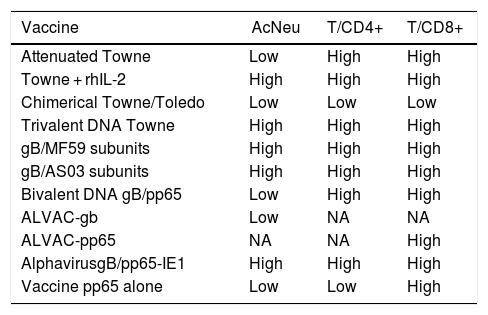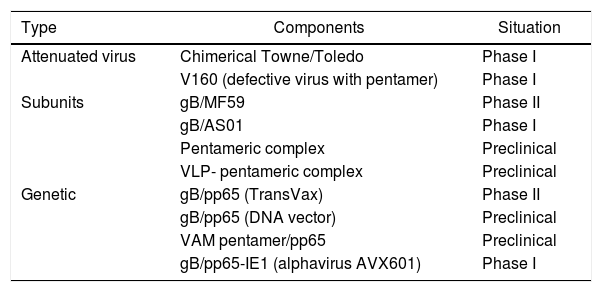Human cytomegalovirus (CMV) is a very ubiquitous virus that is transmitted very efficiently among the population through saliva, urine, lactation or blood transfusions. Around 75% of people at age 15 are already seropositive, have acquired immunity, against this virus. The majority (85%) of congenital CMV infections are due to gestational reactivation (latency) and reinfection by different CMV strains and only 15% to a primary infection during it. These data support the concept of the paradox of previous immunity, that is, the risk of congenital CMV infection is higher in seropositive pregnant women.
One of the possibilities of avoiding congenital CMV infections is universal vaccination in the first months of life. In this way women would reach fertile age with immunity and without CMV in their body.
Despite the efforts made in the last forty years, there is still no vaccine against CMV that can be applied effectively in humans. Of all the multiple platforms developed, only six of them (attenuated Towne vaccine, gB/MF59 subunits, gB/AS03, DNA bivalent, viral vector recombinant and peptide vaccine) have been tested in humans and recently the gB / MF59 and the bivalent DNA have completed Phase II assays. Due to safety concerns, attenuated and vector-based vaccines seem to be ruled out for the future; Therefore it is very possible that the future is in vaccines based on recombinant proteins (gB) and especially those formed by the pentameric complex. Keywords: cytomegalovirus; congenital infection; vaccination; gB glycoprotein; pentameric complex.
El citomegalovirus (CMV) humano es un virus muy ubicuo que se trasmite de forma muy eficiente entre la población a través de la saliva, orina, lactancia o transfusiones sanguíneas. Alrededor del 75% de las personas a los 15 años ya son seropositivas, presentan inmunidad adquirida, frente a este virus. La mayoría (85%) de las infecciones congénitas por CMV son debidas a la reactivación gestacional (latencia) y a la reinfección por cepas de CMV distintas y sólo el 15% a una primoinfección durante la misma. Estos datos apoyan el concepto de la paradoja de la inmunidad previa, es decir el riesgo de infección congénita por CMV es superior en las gestantes seropositivas.
Una de las posibilidades de evitar las infecciones congénitas por CMV es la vacunación universal en los primeros meses de vida. De este modo las mujeres llegarían a la edad fértil con inmunidad y sin CMV en su organismo.
A pesar de los esfuerzos realizados en los últimos cuarenta años, todavía no se dispone de una vacuna frente al CMV que pueda aplicarse de forma efectiva en el ser humano. De todas las múltiples plataformas desarrolladas sólo seis de ellas (vacuna Towne atenuada, subunidades gB/MF59, gB/AS03, bivalente de ADN, recombinante de vector viral y vacuna de péptidos) se han llegado a probar en humanos y recientemente la gB/MF59 y la bivalente de ADN han finalizado los ensayos Fase II. Debido a los problemas de seguridad las vacunas atenuadas y basadas en vectores parecen descartarse de cara al futuro; por ello es muy posible que el futuro se encuentre en vacunas basadas en proteínas recombinantes (gB) y especialmente las formadas por el complejo pentamérico.










